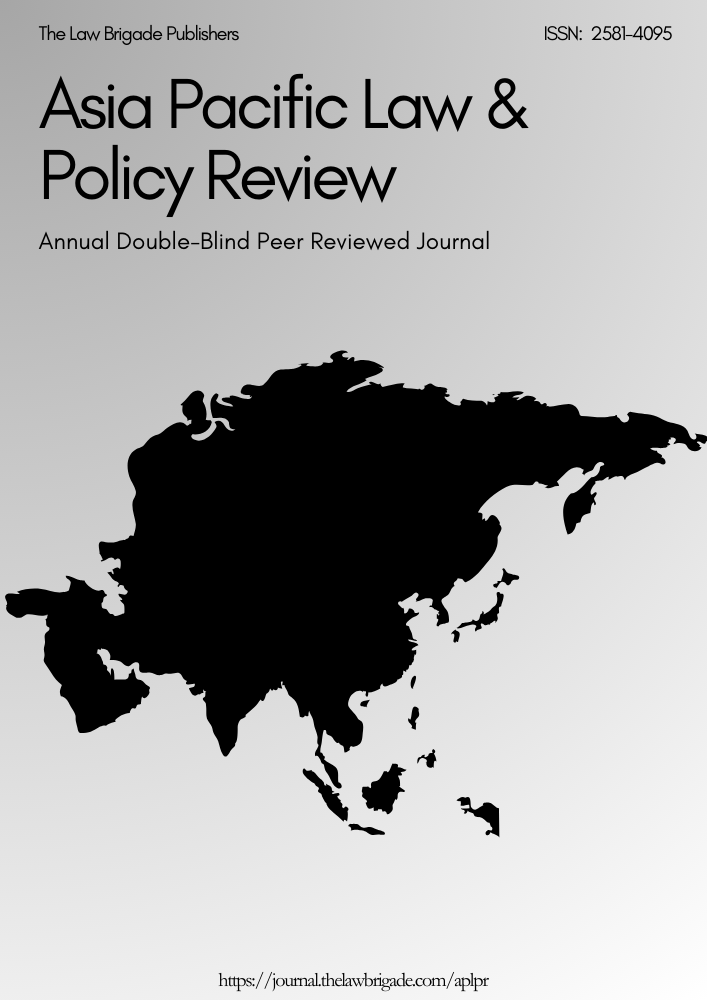AN ANALYSIS ON DNA TECHNOLOGY UNDER THE INDIAN JUDICIAL SYTEM
Keywords:
Identification, Privacy, Constitutional ValidityAbstract
The forensic DNA analysis is commonly used to detect the criminal activities but, it is also used in civil cases to establish the paternity of disputed offspring. The majority of cases regarding disputed paternity arise in the context of affiliation orders, divorce proceedings and questioned legitimacy. The use of DNA evidence in criminal investigation has grown in recent years. DNA testing has helped low enforcement identify criminals and solve difficult crime such as rape, murder with rape etc. Rapid identification of individuals in mass-disaster using DNA typing has also been possible computerized DNA database for the identification of criminal offenders have been created in some countries. DNA is a powerful investigative tool because, with the exception of identical twins, no two people have the same DNA. In other words, the sequence or the order of the DNA building blocks is different in particular region of the cell, making each person’s DNA unique. DNA has great importance in criminal investigation cases as well. This paper examines the science of DNA identification and its use during criminal as well as civil proceedings. There is also analysis of the laws concerned with different country.
Downloads
References
iBorrowed from Jothirmoy Adikari, DNA Technology in the administration of Justice, Lexis Nexis
Butterworths, 2007, P.4.
ii Bimaldeep Singh, Scientific Techniques of Obtaining Evidence, Vol. XVII LAW JOURNAL OF GURU
NANAK DEV UNIVERSITY, p 92.
iii Bachubhai Khasia vs. State of Gujarat, 2009 (4) R.C.R. (criminal) 186.
iv Patinga Balaram Venkata Ganesh vs. State of Andhra Pradesh, (2003) CriLJ 4508.
vBhogilal Shah v. V.K. Guha, (1973) AIR 1196.
viManeka Gandhi vs. Union of India, AIR 1978 SC 597.
vii Thangorani alias K.Damyanti vs. State of Orissa, 2004 CriLJ 4003.
viii Kamti Devi vs. Poshi Ram, Appeal (civil) 3860 of 2001.
ix Robbie Gonzalez, How Criminal Courts Are Putting Brains—Not People—on Trial, WIRED (March 10th,
10:01 am) https://www.wired.com/story/how-criminal-courts-are-putting-brains-not-people-on-trial/ , Para 14.1-
14.7.
xState of Bombay v. Kathikalu Oghad, 1961 AIR 1808.
xiMadan Gopal Kakad vs. Naval Dubey and Ors, 1992 SCR (2) 921.
xiiAsit Kapoor vs. Union of India, AIR 2004 Del 2003.
xiii Gautama Khaddu vs. State of West Bengal, AIR 1993 SC 2295.
xiv Selvi vs. State of Karnataka, (2010) 7 SCC 263.
xv Mukherjee, CONSTITUTIONAL AND EVIDENTIARY VALIDITY OF NEW SCIENTIFIC TESTS,
Journal of the Indian Law Institute, A. D. (pp. 529-542).
xvi Santosh Kumar Singh vs. State, (2010) 7 SCC 263
xvii Surendra Koli vs. State of U.P., (2011) 4 SCC 80
xviii Krishna Kumar Malik vs. State of Haryana, (2011) 7 SCC 130
xix Gwendolyn Carroll, “Proven Guilty: An Examination of the Penalty-Free World of Post-Conviction DNA
Testing”, The Journal of Criminal Law & Criminology, (2007, Vol.2), Pp. 665-668.
xx C. Allison Puri, “An International DNA data base: Balancing hope, Privacy and Scientific Errors”, Pp. 263-
287.
xxi Ananth Kumar vs. State of Andhra Pradesh, 1977 CriLJ 1797.
xxii DJ Vaghela vs. Kantibai Jethabai, 1977 CriLJ 1756.
xxiii E. Hickok, Draft Human DNA Profiling Bill (April): High Level Concerns, 2012.
xxiv R vs. Chief Constable of South Yorkshire, (2003) 1 ALL ER 148.
xxvMaryland vs. King, 133 S.Ct. 1958 (2013).
xxviPeople of the State of Illinois vs. Reggie F. Mills, 577 N.E.2d 477 (1991).
xxvii Daubert vs. Merrell Dow Pharmaceuticals, 509 US 579 (1993).
xxviii Saxsena, M. (n.d.), Striking a Balance: Efficient Investigation and Individual Rights, Legal Services India,
Pp. 42-45.
xxix Vasu vs. Santa, 1975 Ker.LT 53.
xxx Hargovinda Soni vs. Ram Dularey, AIR 1986 MP Para. 57.
xxxi Subayya Gounder vs. Bhoopala Subramanian, AIR 1959 Madras 396.
xxxii Najabhai vs. State of Gujarat, 1972 Cr.LJ 1605.
xxxiii State of Bombay vs. Khathikalu Oghad, AIR 1961 SC 1809.
xxxivNalini v. Union of India, Criminal Appeal Nos. 321-325 of 1998.
xxxv N.D. Tiwari v. Rohit Shekher, The High Court of Delhi, FAO (OS) No. 547/2011.
Downloads
Published
Issue
Section
License

This work is licensed under a Creative Commons Attribution-NonCommercial-ShareAlike 4.0 International License.
License Terms
Ownership and Licensing:
Authors of research papers submitted to any journal published by The Law Brigade Publishers retain the copyright of their work while granting the journal specific rights. Authors maintain ownership of the copyright and grant the journal the right of first publication. Simultaneously, authors agree to license their research papers under the Creative Commons Attribution-ShareAlike 4.0 International (CC BY-SA 4.0) License.
License Permissions:
Under the CC BY-SA 4.0 License, others are permitted to share and adapt the work, even for commercial purposes, provided that appropriate attribution is given to the authors, and acknowledgment is made of the initial publication by The Law Brigade Publishers. This license encourages the broad dissemination and reuse of research papers while ensuring that the original work is properly credited.
Additional Distribution Arrangements:
Authors are free to enter into separate, non-exclusive contractual arrangements for distributing the published version of the work (e.g., posting it to institutional repositories or publishing it in books), provided that the original publication by The Law Brigade Publishers is acknowledged.
Online Posting:
Authors are encouraged to share their work online (e.g., in institutional repositories or on personal websites) both prior to submission and after publication. This practice can facilitate productive exchanges and increase the visibility and citation of the work.
Responsibility and Liability:
Authors are responsible for ensuring that their submitted research papers do not infringe on the copyright, privacy, or other rights of third parties. The Law Brigade Publishers disclaims any liability for any copyright infringement or violation of third-party rights within the submitted research papers.


